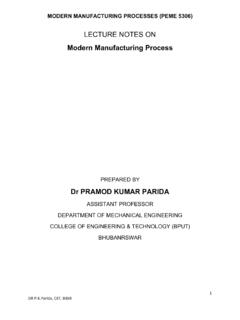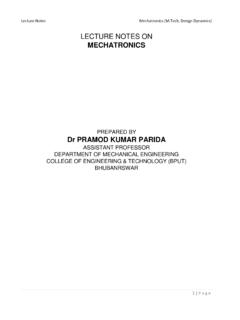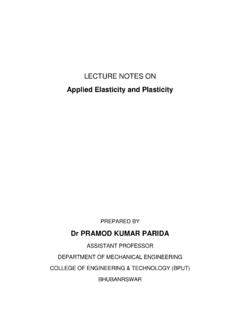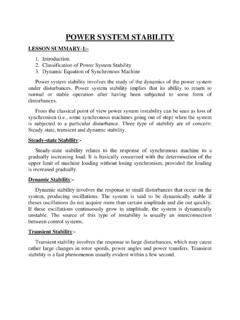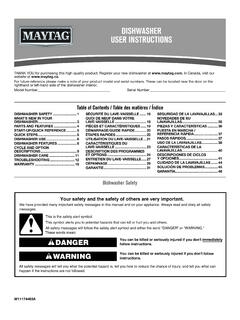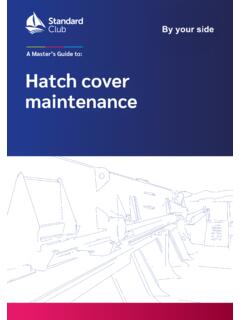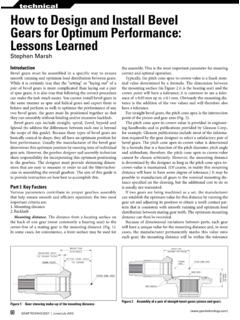Transcription of HVDC Transmission Systems UNIT-1
1 1 HVDC Transmission Systems UNIT-1 Introduction Electric power Transmission was originally developed with direct current. The availability of transformers and the development and improvement of induction motors at the beginning of the 20th century, led to the use of AC Transmission . DC Transmission now became practical when long distances were to be covered or where cables were required. Thyristors were applied to DC Transmission and solid state valves became a reality. With the fast development of converters (rectifiers and inverters) at higher voltages and larger currents, DC Transmission has become a major factor in the planning of the power Transmission . In the beginning all HVDC schemes used mercury arc valves, invariably single phase in construction, in contrast to the low voltage polyphase units used for industrial application.
2 About 1960 control electrodes were added to silicon diodes, giving silicon-controlled-rectifiers (SCRs or Thyristors). Today, the highest functional DC voltage for DC Transmission is +/- 600kV. Transmission is now an integral part of the delivery of electricity in many countries throughout the world. Comparison of AC and DC Transmission The merits of two modes of Transmission (AC & DC) should be compared based on the following factors. 1) Economics of Transmission 2) Technical Performance 3) Reliability Economics of Power Transmission : In DC Transmission , inductance and capacitance of the line has no effect on the power transfer capability of the line and the line drop. Also, there is no leakage or charging current of the line under steady conditions.
3 A DC line requires only 2 conductors whereas AC line requires 3 conductors in 3-phase AC Systems . The cost of the terminal equipment is more in DC lines than in AC line. Break-even 2 distance is one at which the cost of the two Systems is the same. It is understood from the below figure that a DC line is economical for long distances which are greater than the break-even distance. Figure: Relative costs of AC and DC Transmission lines vs distance Technical Performance: Due to its fast controllability, a DC Transmission has full control over transmitted power, an ability to enhance transient and dynamic stability in associated AC networks and can limit fault currents in the DC lines. Furthermore, DC Transmission overcomes some of the following problems associated with AC Transmission .
4 Stability Limits: The power transfer in an AC line is dependent on the angle difference between the voltage phasors at the two line ends. For a given power transfer level, this angle increases with distance. The maximum power transfer is limited by the considerations of steady state and transient stability. The power carrying capability of an AC line is inversely proportional to Transmission distance whereas the power carrying ability of DC lines is unaffected by the distance of Transmission . 3 Voltage Control: Voltage control in ac lines is complicated by line charging and voltage drops. The voltage profile in an AC line is relatively flat only for a fixed level of power transfer corresponding to its Surge Impedance Loading (SIL).
5 The voltage profile varies with the line loading. For constant voltage at the line ends, the midpoint voltage is reduced for line loadings higher than SIL and increased for loadings less than SIL. The maintenance of constant voltage at the two ends requires reactive power control as the line loading is increased. The reactive power requirements increase with line length. Although DC converter stations require reactive power related to the power transmitted, the DC line itself does not require any reactive power. The steady-state charging currents in AC cables pose serious problems and make the break-even distance for cable Transmission around 50kms. Line Compensation: Line compensation is necessary for long distance AC Transmission to overcome the problems of line charging and stability limitations.
6 The increase in power transfer and voltage control is possible through the use of shunt inductors, series capacitors, Static Var Compensators (SVCs) and, lately, the new generation Static Compensators (STATCOMs). In the case of DC lines, such compensation is not needed. Problems of AC Interconnection: The interconnection of two power Systems through ac ties requires the automatic generation controllers of both Systems to be coordinated using tie line power and frequency signals. Even with coordinated control of interconnected Systems , the operation of AC ties can be problematic due to: 1. The presence of large power oscillations which can lead to frequent tripping, 2. Increase in fault level, and 3. Transmission of disturbances from one system to the other.
7 4 The fast controllability of power flow in DC lines eliminates all of the above problems. Furthermore, the asynchronous interconnection of two power Systems can only be achieved with the use of DC links. Ground Impedance: In AC Transmission , the existence of ground (zero sequence) current cannot be permitted in steady-state due to the high magnitude of ground impedance which will not only affect efficient power transfer, but also result in telephonic interference. The ground impedance is negligible for DC currents and a DC link can operate using one conductor with ground return (monopolar operation). The ground return is objectionable only when buried metallic structures (such as pipes) are present and are subject to corrosion with DC current flow.
8 While operating in the monopolar mode, the AC network feeding the DC converter station operates with balanced voltages and currents. Hence, single pole operation of dc Transmission Systems is possible for extended period, while in AC Transmission , single phase operation (or any unbalanced operation) is not feasible for more than a second. Disadvantages of DC Transmission : The scope of application of DC Transmission is limited by 1. High cost of conversion equipment. 2. Inability to use transformers to alter voltage levels. 3. Generation of harmonics. 4. Requirement of reactive power and 5. Complexity of controls. Over the years, there have been significant advances in DC technology , which have tried to overcome the disadvantages listed above except for (2).
9 These are 1. Increase in the ratings of a thyristor cell that makes up a valve. 2. Modular construction of thyristor valves. 3. Twelve-pulse (and higher) operation of converters. 4. Use of forced commutation. 5. Application of digital electronics and fiber optics in the control of converters. Reliability: 5 The reliability of DC Transmission Systems is good and comparable to that of AC Systems . The reliability of DC links has also been very good. There are two measures of overall system reliability-energy availability and transient reliability. Energy availability: Energy availability = 100 (1 equivalent outage time) % Actual time Where equivalent outage time is the product of the actual outage time and the fraction of system capacity lost due to outage.
10 Transient reliability: This is a factor specifying the performance of HVDC Systems during recordable faults on the associated AC Systems . Transient reliability = 100 X No. of times HVDC Systems performed as designed No. of recordable AC faults Recordable AC system faults are those faults which cause one or more AC bus phase voltages to drop below 90% of the voltage prior to the fault. Both energy availability and transient reliability of existing DC Systems with thyristor valves is 95% or more. Application of DC Transmission Due to their costs and special nature, most applications of DC Transmission generally fall into one of the following three categories. Underground or underwater cables: In the case of long cable connections over the breakeven distance of about 40-50 km, DC cable Transmission system has a marked advantage over AC cable connections.


